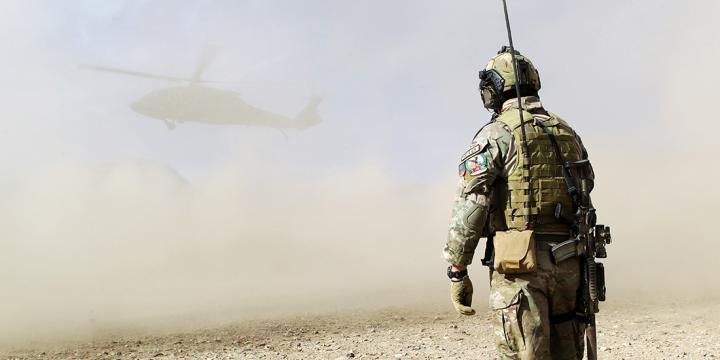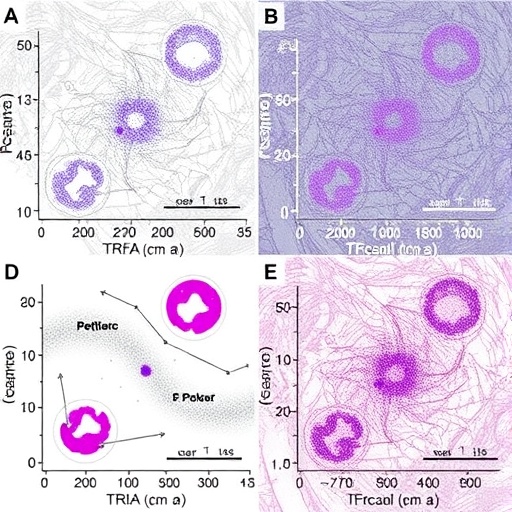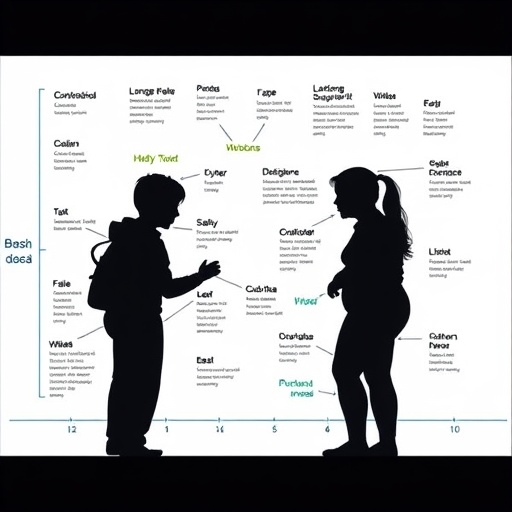Being exposed to life-threatening situations results in less PTSD than seeing others suffer

Credit: Thorbjørn Kjosvold / Norwegian Armed Forces
We usually think that trauma from war is related to the fact that soldiers have been under constant threat of death. New research shows a slightly different picture.
The types of trauma that Norwegian soldiers were exposed to in Afghanistan greatly affected the psychological aftermath of their experiences.
Psychologist Andreas Espetvedt Nordstrand and his research team have looked at how exposure to different types of traumatic experiences influenced Norwegian veterans who were in Afghanistan.
The study shows that being exposed to life-threatening situations results in fewer post-traumatic stress symptoms for soldiers than when they experience suffering and death without being in danger themselves.
Nordstrand is affiliated with the Norwegian University of Science and Technology’s (NTNU) Department of Psychology and is one of the authors of the study, published in the European Journal of Psychotraumatology.
The study is part of a comprehensive survey of how veterans are faring after the war in Afghanistan.
Just over 7000 Norwegian soldiers participated in the war in Afghanistan between 2001 and 2011, and 4053 of them participated in this investigation.
Violation of moral principle
Trauma is roughly divided into danger-based and non-danger-based stressors.
Soldiers can be exposed to danger-based trauma in classic military settings, such as being shot or ambushed. It is an active threat that is linked to anxiety.
Non-danger-based trauma is divided into two subgroups:
Witnessing: seeing suffering or death of others, without being in danger oneself.
Moral Challenges: seeing or performing an act that violates a person’s own moral beliefs.
“An example of witnessing might be that a suicide bomber triggers a bomb that hurts or kills children and civilians. Then our soldiers come in to clean up or secure the area after the bomb has gone off and experience the devastation,” says Nordstrand.
Performing actions that violate moral principles can involve killing an innocent person.
“For example, an officer may order a person shot because it looks as if he is wearing a suicide vest. But then it turns out that he wasn’t, and a civilian ends up being killed,” he says.
“Another example could be when an officer supervises and instructs an Afghan unit, and then learns that someone in that unit is abusing small children. It can be difficult to intervene in that kind of situation, but easy for a Norwegian officer to think afterwards that he should have done something,” Nordstrand explains.
Far more symptoms
There is a marked difference between how danger-based and non-danger-based stressors affect the symptoms of psychological distress.
The study shows that both danger-based and non-danger-based stressors lead to an increase in post-traumatic stress disorder (PTSD). PTSD can involve being hyper-alert, jumpy, sleeping poorly and reliving events after they’ve happened.
“The experience that lasted a long time and burdened him afterwards was when he went out on the battlefield after a bomb had gone off and found a glittery child’s shoe spattered with blood.”
But non-danger-based stressors are likely to trigger far more symptoms of psychological distress.
“In our study, we found that depression, chronic sleep disorders and anxiety were much more linked to non-danger-based stressors than having been in fear for one’s life,” says Nordstrand.
Appreciate life more
The research results also show that exposure to personal life threats often leads to positive personal development. This type of trauma can contribute to the individual appreciating life more, getting closer to relatives and experiencing greater faith in their ability to handle situations.
Non-danger-based stressors, on the other hand, usually lead to negative personal development, where the person values life less, feels more distant from others and has less faith in himself.
Nordstrand said he didn’t expect there to be such a big difference.
Nordstrand’s idea for the study came to him through his job as a psychologist in the Norwegian Armed Forces stress management service, where he noticed that often other issues than having been shot at were plaguing the soldiers.
“A lot of soldiers told stories of how witnessing someone else’s suffering, especially of children who became victims of the war – were tough to work through,” says Nordstrand.
One of the soldiers he’s followed up with had participated in lots of battles without dwelling on them.
“The experience that stayed with him and burdened him afterwards was when he went out onto the battlefield after a bomb had gone off and found a child’s sparkly shoe spattered with blood,” the psychologist says.
According to Nordstrand, a lot of people hide their non-danger-based trauma and don’t talk about it to their family, friends or colleagues. He thinks this relates to the fact that non-danger-based trauma is often linked to shame and guilt, and that it can be more difficult to talk about than that they were scared in an exchange of fire.
“A lot of soldiers are probably afraid of feeling alienated if they would tell their family and civilian friends of all the horrors they saw and experienced. Such experiences often don’t fit very well with the world view we protected Norwegians have,” says Nordstrand.
Wants to focus on the spectrum
The researcher hopes the study can help direct attention to the fact that there is a wide range of traumatic experiences. He would like to see the focus be not only on people who have been in life-threatening situations, but also on assistance personnel, police and firefighters who are exposed to non-danger-based stressors in their occupations on a daily basis.
Other studies, including Swedish ones, show that firefighters are a group that is vulnerable to depression and suicide.
“We tend to turn on the blue light and rush to help when someone has been in a life-threatening situation. I think we can do a much better job of helping people by acknowledging that there’s a real risk of mental illness after being exposed to non-danger-based trauma. We should develop protocols so that we can capture those who are vulnerable and figure out how we can better utilize our resources,” says Nordstrand.
###
The study was funded by the Norwegian Ministry of Defence and carried out by the Norwegian Armed Forces Medical Services (Forsvarets sanitet).
Reference: Danger and Non-Danger Based Stressors and their Relations to Posttraumatic Deprecation or Growth in Norwegian Veterans Deployed to Afghanistan, European Journal of Psychotraumatology.
Media Contact
Andreas Espetvedt Nordstrand
[email protected]
Related Journal Article
http://dx.




